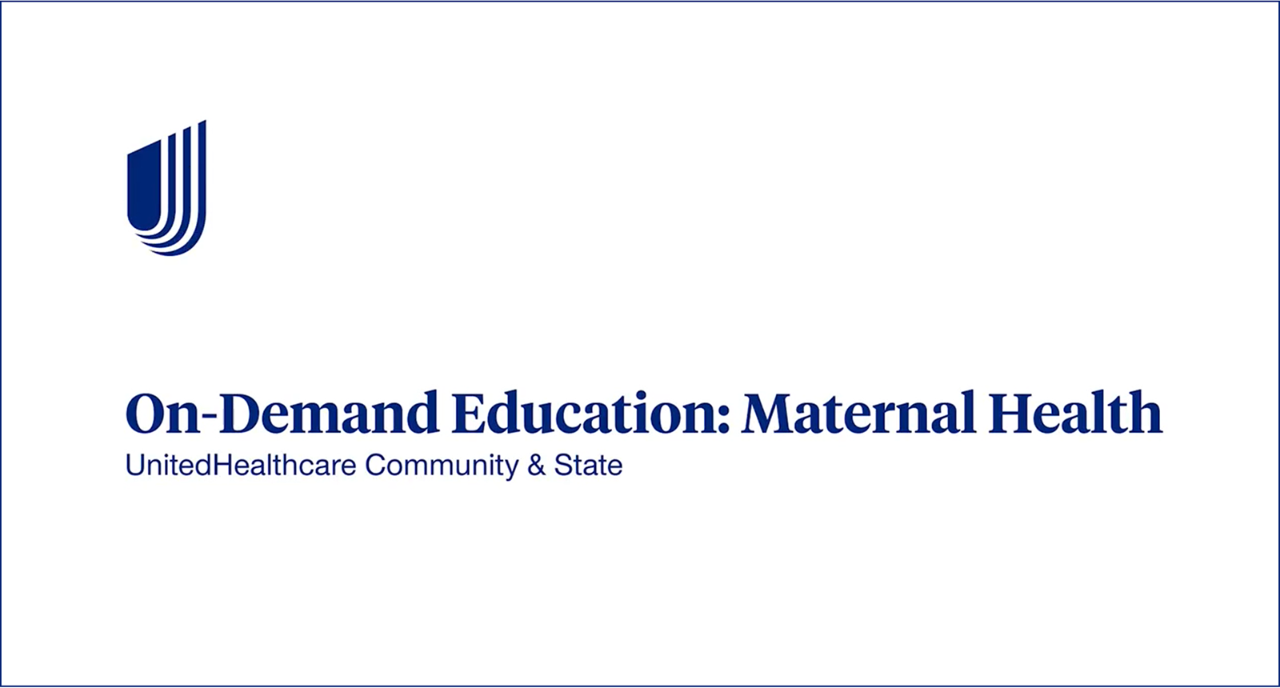Medicaid covers nearly half of all births in the U.S. It has been the primary source of health coverage for low-income, pregnant individuals for several decades, providing care throughout the birthing process.
In this video, UnitedHealthcare Community & State leaders explore how Medicaid supports beneficiaries and cares for them before, during and after pregnancy. The video also discusses how Medicaid can improve outcomes for both the pregnant individual and their child.
Test yourself! Take the Maternal Health knowledge quiz.
Medicaid is a primary source of health coverage for pregnant, low-income individuals and covers what percentage of births in the United States each year?
Correct!
Medicaid covers 42% of U.S. births
Incorrect
Medicaid covers 42% of U.S. births
Pregnant individuals who earn 133 percent of the Federal Poverty Level (FPL) are a mandatory eligibility group for coverage in Medicaid.
Correct!
Pregnant individuals who earn 133% of the FPL are a mandatory eligibility group
Incorrect
Pregnant individuals who earn 133% of the FPL are a mandatory eligibility group
If a pregnant individual earns too much to qualify for Medicaid, but too little to afford private insurance, they may be eligible for coverage through CHIP. What does CHIP stand for?
Correct!
CHIP is the Children’s Health Insurance Program and it covers some pregnant individuals not eligible for Medicaid.
Incorrect
CHIP is the Children’s Health Insurance Program and it covers some pregnant individuals not eligible for Medicaid.
After a child is born, coverage for the parent under Medicaid or CHIP is available for 45 days.
Correct!
Medicaid and CHIP coverage ends 60 days after childbirth.
Incorrect
Medicaid and CHIP coverage ends 60 days after childbirth.
An individual can be especially vulnerable during the postpartum period. What are some potential risks during this period?
Correct!
The postpartum period is particularly challenging as individuals may experience depression. People who have previous conditions such as substance abuse may relapse during this period. Health conditions identified during pregnancy such as diabetes also need to be monitored to ensure they don’t further impact the health of the individual.
Incorrect
The postpartum period is particularly challenging as individuals may experience depression. People who have previous conditions such as substance abuse may relapse during this period. Health conditions identified during pregnancy such as diabetes also need to be monitored to ensure they don’t further impact the health of the individual.
How many babies are born preterm in the United States?
Correct!
One in 10 children are born preterm in the U.S.
Incorrect
One in 10 children are born preterm in the U.S.
Black, American Indian and Alaska Native pregnant individuals are how many times more likely to die from a pregnancy-related cause than White individuals?
Correct!
BIPOC pregnant individuals are 3x more likely to die from a pregnancy-related cause.
Incorrect
BIPOC pregnant individuals are 3x more likely to die from a pregnancy-related cause.
Prenatal care management and postpartum coverage can be improved through policy and program design features that focus on these elements:
Correct!
The health of pregnant individuals can be improved through better Medicaid program design to address inequity, eligibility periods, access to both clinical and non-clinical services and enhanced digital tools.
Incorrect
The health of pregnant individuals can be improved through better Medicaid program design to address inequity, eligibility periods, access to both clinical and non-clinical services and enhanced digital tools.
